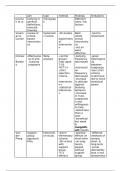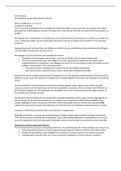Class notes
Class notes 2.7 Challenges in Education & Development
- Course
- Institution
Detailed English summary for the course 2.7C Challenges in Education & Development with all the important information for the exam. Contains information about all problems, including visuals and direct comparisons of articles.
[Show more]





